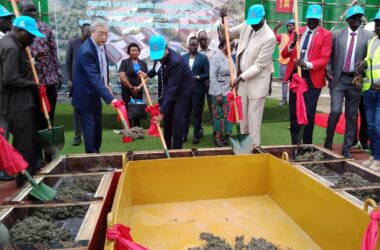By Aweye Teddy Onam
Over 1,000 people from Lafon County have started trekking to Juba, fleeing starvation.
A lawmaker representing Lafon County in the National Legislative Assembly (TNLA), Ungang Nelson Uthuou has disclosed to No. 1 Citizen Daily Newspaper in an exclusive interview
He said that drought has hit Lafon County this year, making the locals very food insecure and forcing them to flee in search of survival, elsewhere.
According to Uthuou, since the beginning of this year, Lafon County has been lacking rain compared to last year, when it experienced floods.
The MP echoed that Lafon County has been grappling with this situation for a very long time since independence, and no serious measures have been taken to help salvage his community.
“Despite our contribution to the liberation of this country, Lafon has never really received anything in return, so we really want to remind the government that the issue of the road must be put in place to help with the transportation of food staff during situations like droughts,” he urged.
“First of all, given the national budget, Lafon is one of the 14 national schemes in the Republic of South Sudan, but nothing has been done in the area.”
MP Ungang said due to the hunger that has been brought by the drought, people have started to abandon their homes, walking on foot from Lafon to Juba, to look for survival.
“People are coming on their own, but there’s no humanitarian assistance that has been reached. People are coming here on their own,” he stated.
Lafon being a landlocked area and considered one of the hardest-to-reach areas, the indigenous people always lack basic services due to the distance and lack of proper access roads.
The area MP said that as a representative of the people, he has echoed the voice of his people several times but to no response.
“The problem is we need a better road because, during the rainy season, the whole place is completely cut off. Because of this, it is affecting the people in the area, and now there is a drought and no humanitarian help has ever reached Lafon,” he decried.
“As somebody representing the people there, I’ve always been reminding our government that much intervention needs to be done in Lafon,” he continued.
Billy, a Lafon native living in Juba, reported to a local chief in Maraguna about a concerning situation back home.
One Lafon native currently residing in Juba, who identified himself only as Billy, is worried that the situation might get worse in January and February when their little food is finished.
“It will be very tough for people. You’d see most of the people coming now to Juba. If they come here, how will they survive here?” Billy questioned.
He said his community members who are moving from Lafon to Juba came with the intention of seeking food from their relatives.
“They ask that we have people in Juba that can help them, like family members whom they believe that they can get support from. That is why they say, instead of just staying there, why not go to Mr. X? So that he can help me,” Billy lamented.
He noted that no humanitarian agency has ever gone to Lafon because they claimed the area had a worse security level.
“This is a very big challenge unless that language of insecurity is removed from the humanitarian context so that people will be happy to receive foodstuff from humanitarian agencies in South Sudan,” he emphasized.
Billy urged the government of South Sudan to sensitize and educate the people of Lafon about agriculture.
Over 5.82 million people in the country are experiencing acute food insecurity and malnutrition, according to the latest Integrated Food Security Phase Classification (IPC) report for South Sudan, released early this week.
The IPC’s latest report estimates that about 5.78 million people will also be food insecure during pre- and post-harvest periods, potentially by December 2023.
The report released by the government and three United Nations agencies detailed that 7.1 million people would face crisis, emergency, and catastrophic levels of hunger in the next lean season of April to July next year.




